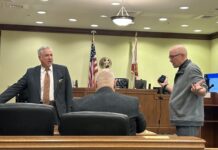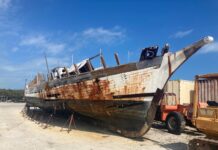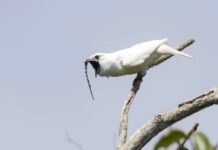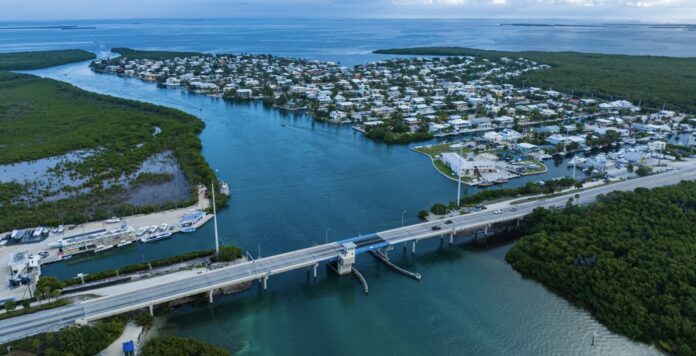The Areas of Critical State Concern program was created by the Florida Environmental Land and Water Management Act of 1972. According to its description, “The program was intended to protect resources and public facilities of major statewide significance, within the designated geographic areas, from uncontrolled development that would cause substantial deterioration of such resources.”
In 1975, the Florida legislature designated the Florida Keys as an area of critical concern because of the island chain’s environmental sensitivity and mounting development pressures. The idea was to protect the environment, improve nearshore water quality, promote public land acquisition and ensure that local populations could be safely evacuated in case of hurricanes. The other objective was to provide affordable workforce housing.
Fast forward nearly 50 years, and in 2023, discussions are underway to effectively abort the designation assigned to the Florida Keys — it being an area of critical concern — and disregard the “moratorium” on new construction. On the contrary, the new plan being bandied about is to call off the watchdogs and allow for the construction of as many as 8,000 new homes and businesses.
The lesson learned has been contrary to the messages sent back by the environment. The Florida Keys are not what they were 50 years ago — nor is the Florida Reef, for that matter. Coral reefs are struggling worldwide due to coastal development, poor water quality, overfishing, disease, bleaching events and direct human impacts like ship groundings and being pummeled by dropped anchors.
According to Mote Marine, “From 2009-2018, the world’s coral reefs lost 14% of their coral — a blow to fisheries that depend on coral reef habitats, coastal communities that need corals’ protection from storm waves and economies supported by coral reefs’ services worth $2.7 trillion per year worldwide. These losses add up to more coral than you can find on Australia’s reefs today.”
It is a fraction of the number of corals lost for all of those other reasons, decade after decade. Over the last 40 years, 90% of the Florida Reef has died off. Diving and snorkeling in the Florida Keys are not what they used to be. When you hear old-timers talk, they describe a vibrant reef rich with biodiversity. The scientists do, too. As for biodiversity, or its lack thereof, it is not just the divers who talk about how things used to be; the fishermen do, too, because fishing is not what it used to be.
Whether it is the backcountry, the reef or offshore, the numbers of fish are a fraction of what they once were — ask a fishing guide or anyone who has grown up in the Keys. Twenty-five years ago, local restaurants served fresh local fish. In 2023, more and more restaurants will serve frozen, imported fish and fish not native to local waters. Twenty years ago, when I spent a decade waiting tables in a local seafood restaurant, serving people who had spent the day fishing and brought their catch to “hook and cook” was a daily occurrence. The amount of fish tossed to the Dumpster every night was remarkable.
In the old days, people talked about night fishing on the bridges and sleeping on the road because there was so little traffic. The number of cars traveling up and down the highway and over the bridges has increased over the years. The Overseas Highway, the lone stretch of asphalt bridging the mainland to Key West, needs work, and driving along it can feel like a video game as you navigate potholes, orange warning cones and construction projects.
Some of those construction projects include the update to the freshwater pipeline, which is, like the highway, a lone conduit connecting the mainland to the island chain, and already under more pressure than it can handle, as was indicated when three sections of the pipeline burst earlier this year. At least it is being updated, a project that is also contributing to the traffic problem.
As the number of hotels and resorts has increased or expanded in the last decade or two, the more heads that have arrived to fill those beds, the more crowded the two-lane highway becomes and the more stress put on what is an already shaky (and pot-holey) infrastructure. Already, rising tides are flooding low-lying areas, and the county needs nearly $2 billion to combat the encroaching effects of climate change.
On more than one occasion, the Snake Creek Bridge, the last of the drawbridges connecting one island to another, has become stuck in some terrible position, allowing traffic to go nowhere. Just last week, a single-car accident knocked the power grid out in the Lower Keys. When essentially one electrified line connects the islands to a power source, all it takes is one small snip to sever the entire connection — which happens periodically (and did again on Dec. 14).
The primary industry in the Florida Keys is hospitality, and those working in the resorts, bars and restaurants are increasingly commuting from the mainland because housing in the Keys has become untenable — producing additional daily traffic. My wife and I were lucky enough to buy a 1,075-square-foot house the last time the market crashed. Thankfully, we seized the opportunity when it presented itself, as we could not afford the rent and uncertainty that rental properties present.
The solution, it seems, is to apply additional pressure to an environment in significantly worse shape than it was in 1975 when the Florida Keys became an area of critical concern. Cut down more trees and hammocks and replace them with asphalt and concrete to accommodate second and third homes for well-off families. More and more, the Keys are becoming a home and playground for the wealthy who run their boats and wave runners across seagrass flats, leaving their prop scars behind like entitled signatures.
Continue pressuring the local shallows with events like lobster mini-season, which was introduced to attract people during what used to be the slow summer months. At what point is enough enough?
My family is not from the Keys, and I have no children who will see the Keys long after I have gone on to whatever comes next. Hopefully, my history stories will be around and help those interested in these things learn the “this is how it started” part of the story. While I will never know, I hope the story has a happy ending. History, however, does not paint a pretty picture.
























